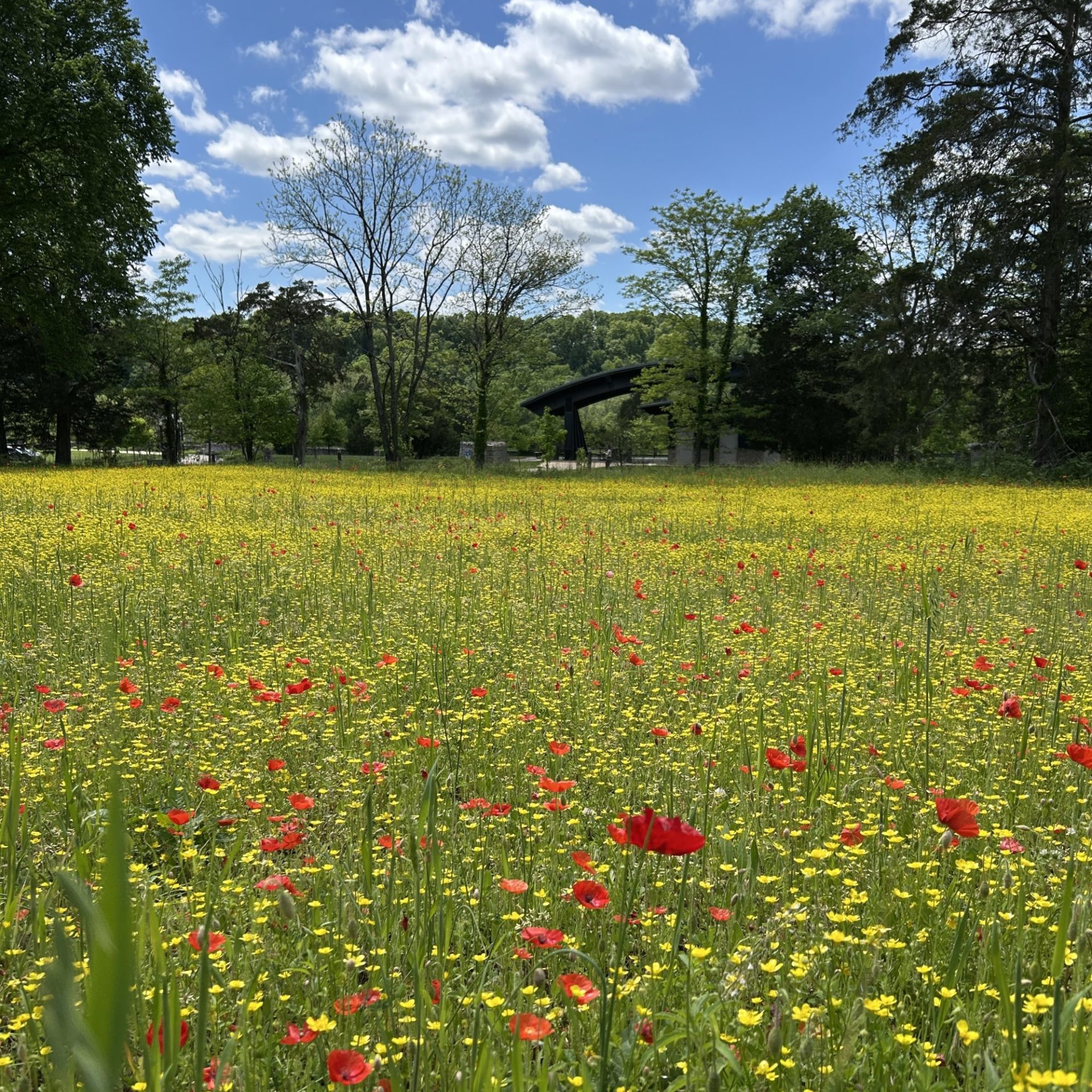
May flowers bring beauty and much more to The Parklands
May is here, and so are beautiful flowers. The sprinkles of marsh marigold and ephemeral flowers that surfaced in April have given way to whole fields of yellow and sprawling clusters of lavender-blue. In this article, we offer a few highlights of the petaled splendor you can encounter this month at The Parklands. We also touch on the powerful benefits of flowers in nature that go beyond colorful allure.
Fields of yellow with pops of red
Outside the Moss Gibbs Woodland Garden at Broad Run Park, near the Ogle Foundation Woodland Pavilion, lies a large field of yellow flowers dotted with vibrant red poppies.
Poppies are characterized as “perfect” flowers in botanical terms because they have both male and female reproductive structures, which makes pollination easier. Along with poppies, look for Kentucky-native coneflowers and daisy-like black-eyed Susans to possibly emerge this month and brighten the open meadows.
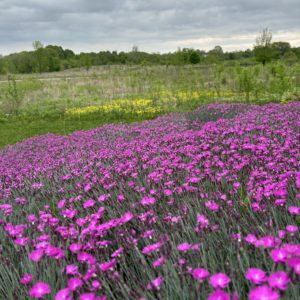 Pink blooms add to the park layers and interest
Pink blooms add to the park layers and interest
A signature pathway of Beckley Creek Park, the Humana Grand Allee is a favorite location for many of our visitors. If you’re walking toward the fountain and circular picnic area from the northern end of the park, you’ll see a hillside covered with pink dianthus plants. Conversely, if you’re standing near the fountain and looking out across the hillside, the flowers seem to roll seamlessly into the surrounding rural fields. This point of view is different from the elevated fountain area but lovely all the same.
In spring—and in every season at The Parklands—even familiar terrain gains new interest as the flora and fauna change. Try viewing the landscape from different angles to fully appreciate its beauty.
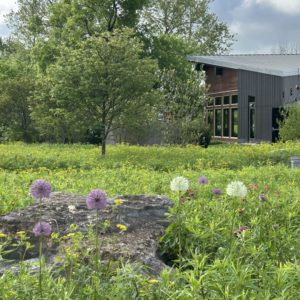 Striking white and purple ornamentals
Striking white and purple ornamentals
The Rounsavall Family Foundation Creekside Center in Beckley Creek Park is a hub of activity, containing the Gheens Foundation Lodge, the PNC Achievement Center, the Marshall Playground and Sprayground, and the PricewaterhouseCoopers LLP Pavilion, among other amenities.
Our Horticulture and Natural Areas Team has worked hard to bring springtime charm to the bustling area, with flowers that spark curiosity. One example is the ornamental onion, a flowering plant distinguished by its bold, globe-shaped blooms called umbels. The tiny florets within the umbels have a star-like structure, amplifying the ethereal quality of these statement-making plants. The white and purple cultivars in the Allium genus contrast vividly against green and golden prairie grounds.
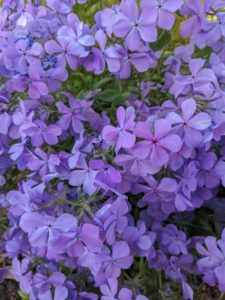 Watch for the ‘Blue Moon’
Watch for the ‘Blue Moon’
In Kentucky, the Flower Moon—May’s full moon—will reach peak illumination on Monday, May 12. In the meantime, the ‘Blue Moon’ is already here but will soon fade.
In the spring, this popular variety of woodland phlox (Phlox divaricata) flexes its flowering beauty at the Moss Gibbs Woodland Garden in Broad Run Park. The delicate, notched petals range from lavender-blue to deep violet. The phlox form mats or clusters in areas shaded by understory trees, adding wonder to the already enchanting forest landscape.
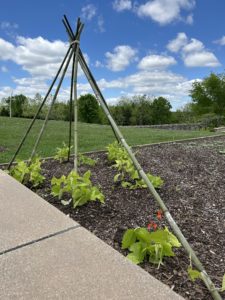 A garden where nature meets knowledge
A garden where nature meets knowledge
Nature has much to show us and teach us. Our Farmer’s Table Garden in Turkey Run Park brings this idea to life. The only one of its kind in our park system, this garden highlights plants from different industries. These include ornamental flowers, herbs used in food seasonings, and plants like sorghum that are popular crops in Kentucky and can be converted into biofuels. The garden offers other educational opportunities as well. For instance, visitors can observe male and female flowers on gourds and cucumbers.
Seedlings from our greenhouse are now being planted and will soon begin to grow. While the garden is designed to be visually appealing from the ground, you can also get a bird’s-eye view from the vantage point of the Silo Lookout.
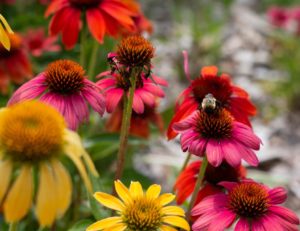 Beauty that supports pollinators and wildlife
Beauty that supports pollinators and wildlife
The meadows and gardens throughout The Parklands are embodiments of the power of great design. Their beauty and the way they captivate attention help create a delightful visitor experience. They also help us achieve our goal of fostering diverse species.
Phlox and other wildflowers are an important early nectar source for pollinators. The seeds and capsules can provide food for insects and small animals, helping the plants play their part in the local ecosystem. By forming dense and low-to-the-ground colonies, phlox help suppress invasive species and reduce soil erosion.
Each native plant in the park system contributes uniquely to the ecosystem. Likewise, decorative plants are intentionally curated for their ability to capture the imagination, deepen our connection to the natural world, and promote biodiversity.
Next time you hike or bike through the parks—especially in May—take a moment to enjoy not just the sweet fragrance of the flowers, but also their beauty and the role they play in the bigger picture of things. We’re confident you’ll be pleasantly surprised.
